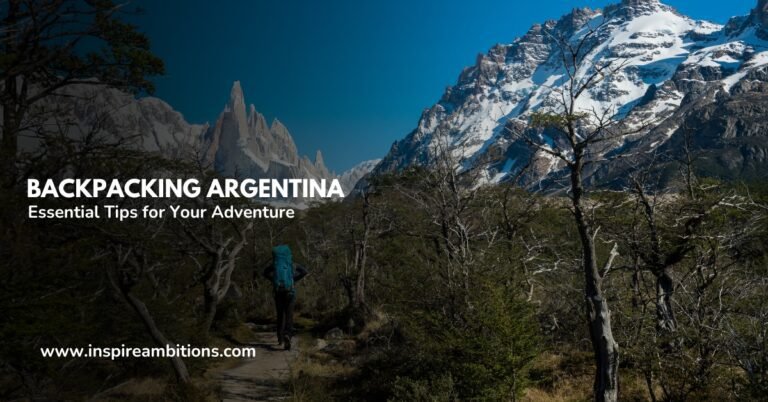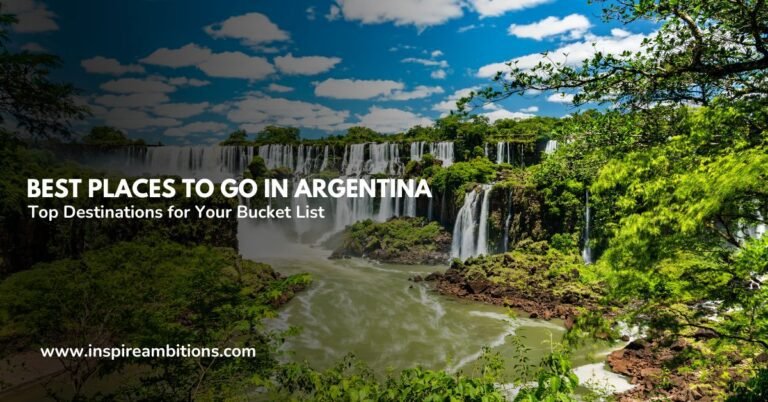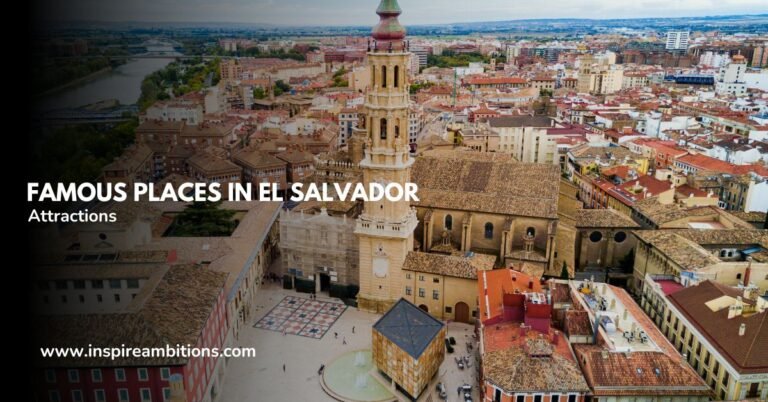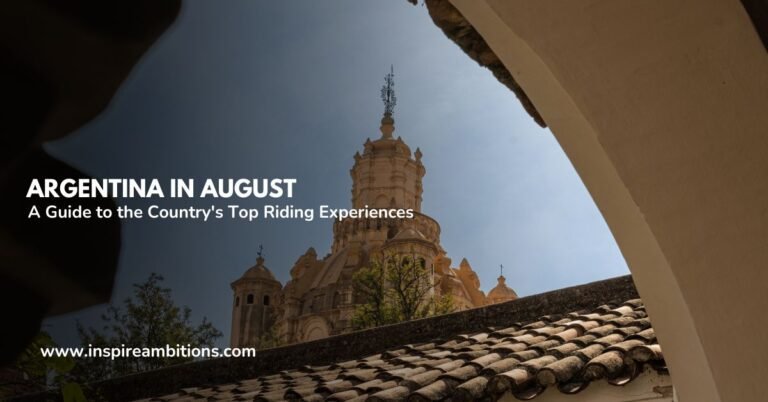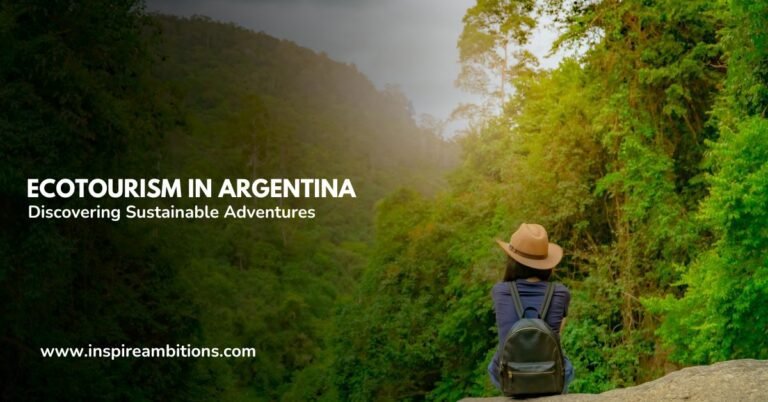Penguins in Argentina – A Guide to Where and When to See Them
Argentina is a haven for penguin enthusiasts, offering the chance to see these charismatic seabirds in their natural habitats.
Considering you’re keen on feathered creatures, you’re in for a treat, as Argentina hosts several penguin species, including the famous Magellanic penguins.
Found along the coastal regions of Patagonia, these penguins are identifiable by their distinctive black and white plumage and the two black bands across their chests.
During the breeding season, which spans from October to March, you can witness these birds in significant numbers as they come ashore to nest.
Patagonia’s Punta Tombo Reserve is a prime location to observe approximately 800,000 Magellanic penguins. It’s crucial to plan your visit wisely, as the reserve is open from mid-September through April, ensuring the penguins’ breeding activities are undisturbed during the closed months.
In addition to the Magellanic species, Patagonia is also home to Gentoo and Rockhopper penguins, so your journey might allow sightings of these species, too.
These creatures adapt well to their environments, thriving in the cooler climates of the southern hemisphere. Remember to bring your camera and respect the penguins’ space to keep this experience enjoyable for both you and the animals.
Penguins in Argentina: Diverse Species and Their Unique Habitats
When you think of Argentina, tango, beef, and the snow-capped Andes might spring to mind. Yet, this South American nation is also a sanctuary for several penguin species, each thriving in its distinct coastal nook.
Magellanic Penguins of Punta Tombo
Punta Tombo is a standout region on the Valdes Peninsula and the premier spot to witness Magellanic Penguins. From September to March, these penguins flock here in the hundreds of thousands, making it one of the largest colonies in the world.
- Size: Adults stretch to about 61 – 76 cm in height.
- Weight: They weigh between 2.7 and 6.5 kg.
- Appearance: Sporting a classic black and white plumage, they’re known for their distinctive two black bands between the head and the chest.
These penguins are avid swimmers, spending much of their lives in the marine ecosystem, darting through the sea in search of food. Climate fluctuations have begun to influence their behaviour, so their presence also acts as an indicator of environmental changes.
Diverse Penguin Species Across Argentina
Argentina is lucky to be home to a variety of penguin species, each with its particular habits and habitats.
- Gentoo Penguins: Recognizable by a broad white stripe on their heads, usually found farther south near Ushuaia and Tierra del Fuego.
- King Penguins: Establish smaller colonies and primarily reside in the Tierra del Fuego.
- Rockhopper Penguins: Known for their distinctive crest and hopping movement, these penguins are typically found on rocky shores.
Each species adapts to the local climate and environment, from the warmer waters of the northern coasts to the frigid seas of the south.
Breeding Grounds and Seasonal Changes
During the breeding season, between September and February, these penguins are concentrated in breeding colonies, diligently constructing nests and nurturing their chicks.
As the seasons shift, many embark on migrations to follow the marine food web, dictated by water temperatures and prey availability. These ecosystems are sensitive to the slightest climate change, which could lead to profound shifts in penguin populations and behaviours.
For you, these penguin habitats offer a peek into a captivating part of Argentina’s southern wildlife. Whether you’re a budding naturalist or just a curious traveller, the changing scene of penguins interacting within their communities against the backdrop of Argentina’s dynamic environment promises an experience nothing short of magical.
Human Interactions and Conservation
In Argentina, the life of penguins is closely interwoven with human activities, and it’s paramount that we understand these for their survival.
Ecotourism in Coastal Patagonia
Ecotourism has become a significant part of life along the coastal regions of Patagonia, drawing visitors to places like Puerto Madryn and Ushuaia.
You’ll see, for example, the Magellanic penguins at Punta Tombo, where people can witness these incredible birds in their natural habitat. Marine Protected Areas have been established to protect these areas and ensure that penguins can thrive without too much human interference. However, it’s your responsibility as a visitor to follow guidelines and respect their home.
Threats and Conservation Efforts
Despite conservation efforts, penguin populations face threats like oil spills, which sadly occur along the Argentine coast. Efforts include cleaning up these spills and enforcing stricter regulations for oil drilling and transportation.
Additionally, conservation groups are working hard to protect the penguins’ breeding grounds and feeding areas. In these efforts, places like Puerto Deseado play a key role in conservation, and you can support them by getting involved with local clubs or schools that focus on environmental education.
Wildlife and Local Culture
The presence of penguins and other wildlife has shaped the local culture in places like Puerto Madryn and Ushuaia. Here, estancias (ranches) coexist with penguin colonies, and tango rhythms often mix with the sounds of the wild. It’s a unique blend that highlights the need for harmony between nature and human activities. By promoting and engaging in local culture, you also support penguin preservation.
Remember, your visit could be a powerful force for conservation if done thoughtfully.
Marine Life Interactions and Predation
In the waters off the coast of Argentina, the intricate dance of predator and prey plays a crucial role in the health of marine ecosystems. Here, you’ll discover how majestic birds and powerful marine animals interact.
Coexisting with Marine Predators
Magellanic penguins share the Atlantic Ocean with a variety of marine creatures. Some of the most formidable predators in these waters include killer whales and sea lions. These predators are on the lookout for their next meal, and while penguins are excellent swimmers, they must always be vigilant.
- Killer whales: Often spotted in these regions, they are at the top of the food chain.
- Sea lions: Agile in water, they pose a significant threat to penguins.
Not only penguins but also elephant seals become part of this underwater chase. They, too, must dodge the predators as they hunt for krill and crustaceans to sustain themselves.
Birdlife and the Food Chain
Above the waves, birds such as albatross and giant petrels patrol the skies. They are interconnected with marine life, often scavenging the leftovers from a predator’s feast. The presence of these large birds indicates the health and diversity of the aquatic ecosystem below.
These birds partake in the abundant feast provided by the sea:
- Albatross: With their vast wingspan, they are built for endurance flying, aiding in their search for food.
- Giant Petrels: Known for their scavenging behaviour, they are quick to capitalize on the remains of marine predators’ meals.

